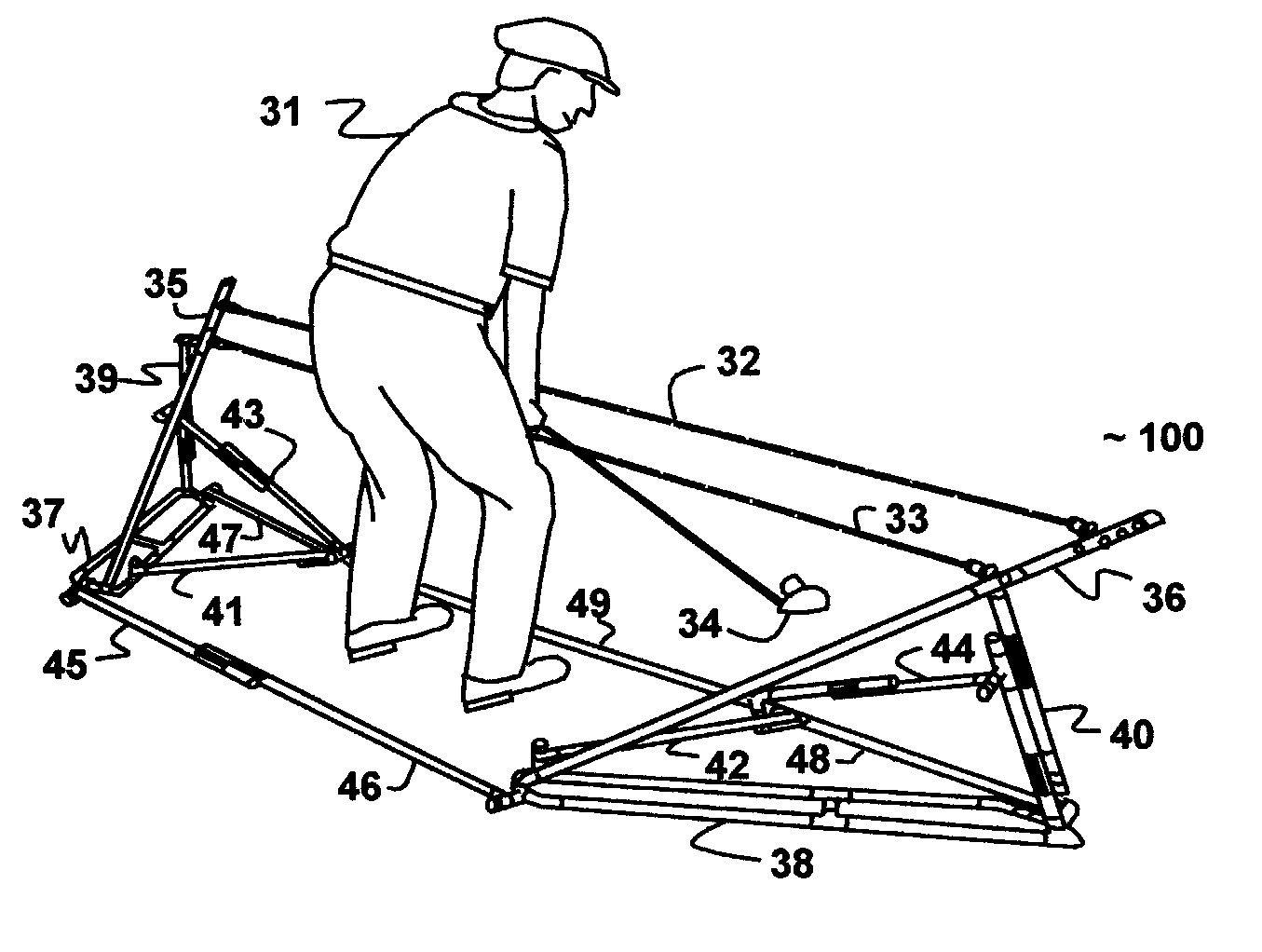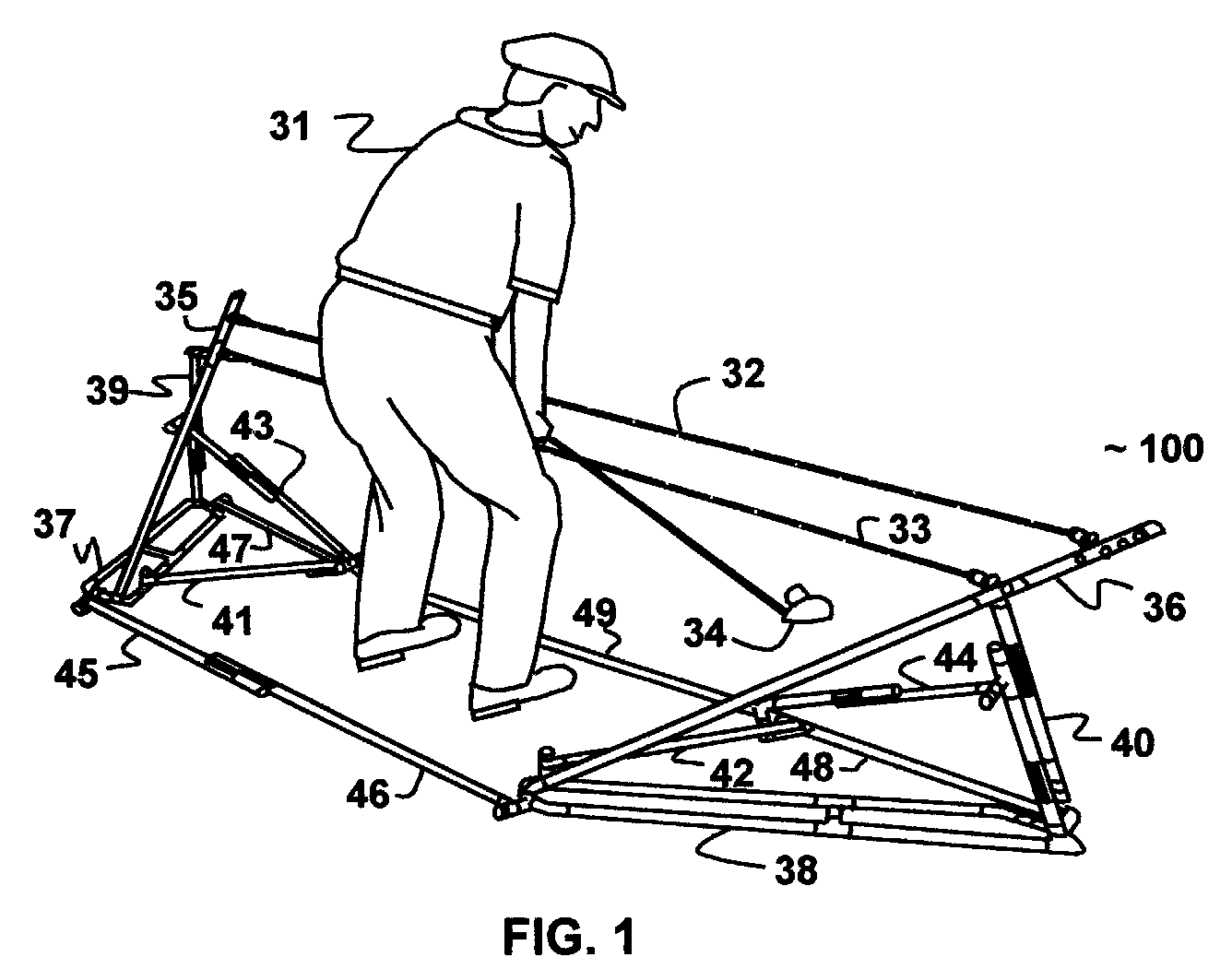Golf swing plane training method and apparatus
a golf and swing plane technology, applied in the field of golf, can solve the problems of affecting the complete swing of the golfer, affecting significantly increasing the load of the elastic cord, so as to improve the consistency of the golfer's ball flight, and improve the accuracy of the golfer's swing
- Summary
- Abstract
- Description
- Claims
- Application Information
AI Technical Summary
Benefits of technology
Problems solved by technology
Method used
Image
Examples
Embodiment Construction
[0029]Referring to FIG. 1, there is shown a golf swing plane training apparatus in accordance with the invention in the perspective view. The right hand and left hand portions of the apparatus are substantially mirror image. The hands of a golfer 31 at address are placed between inner elastic cord 33 and outer elastic cord 32. The elastic cord 32 and elastic cord 33 are oriented substantially perpendicular to the proper swing plane. Elastic cords 32 and 33 are suspended between first end attachment member 35 and second end attachment member 36. Each cord can be attached to a plurality of locations 50 (FIG. 2) along the forward end of first end attachment member 35 and second end attachment member 36. The distance between elastic cords 32 and 33 is determined by the selection from various locations 50.
[0030]First end attachment member 35 is pivotably secured to first base assembly 37 thus enabling first end attachment member 35 to be raised and lowered on the forward end as illustrat...
PUM
 Login to View More
Login to View More Abstract
Description
Claims
Application Information
 Login to View More
Login to View More - R&D
- Intellectual Property
- Life Sciences
- Materials
- Tech Scout
- Unparalleled Data Quality
- Higher Quality Content
- 60% Fewer Hallucinations
Browse by: Latest US Patents, China's latest patents, Technical Efficacy Thesaurus, Application Domain, Technology Topic, Popular Technical Reports.
© 2025 PatSnap. All rights reserved.Legal|Privacy policy|Modern Slavery Act Transparency Statement|Sitemap|About US| Contact US: help@patsnap.com



